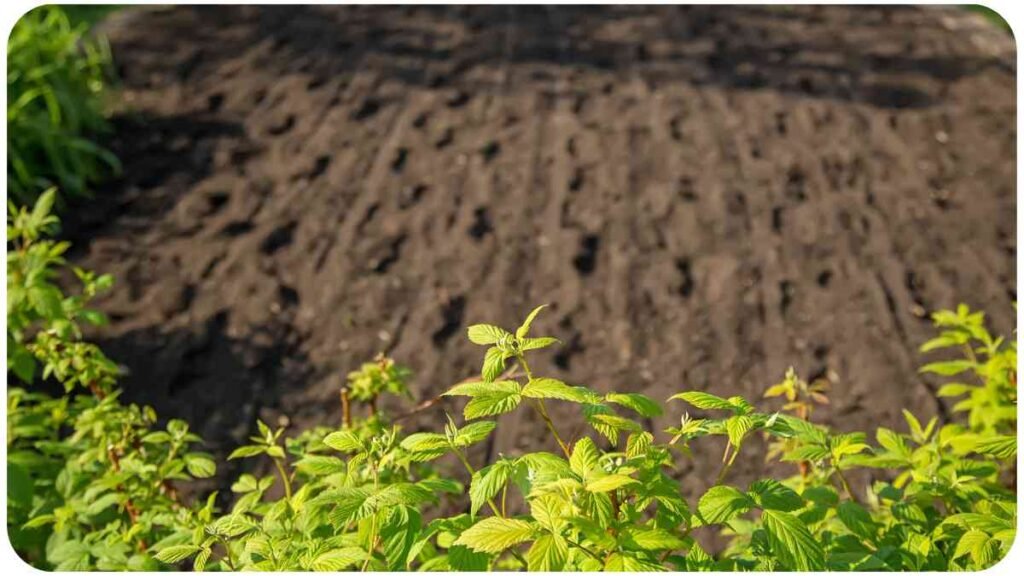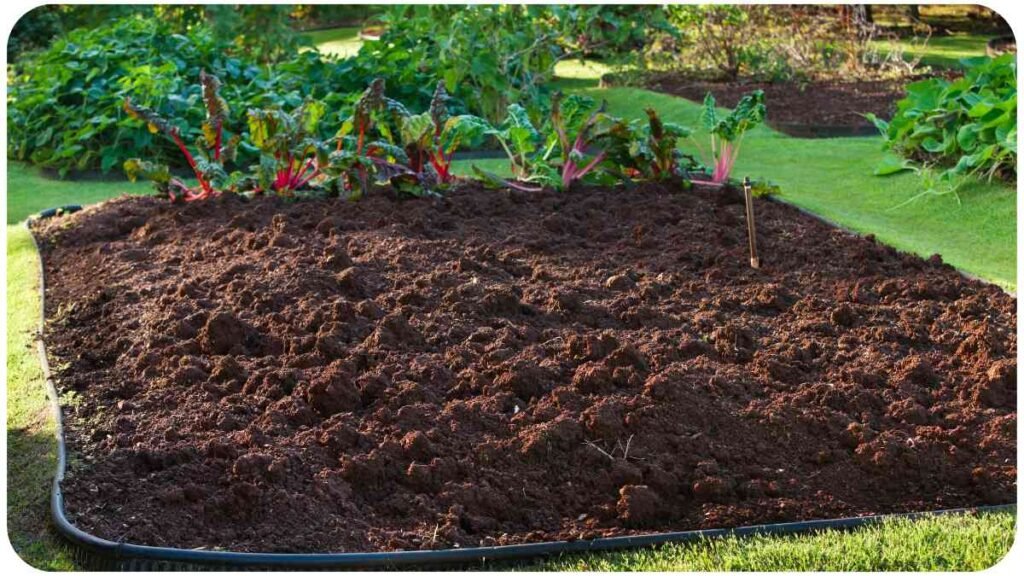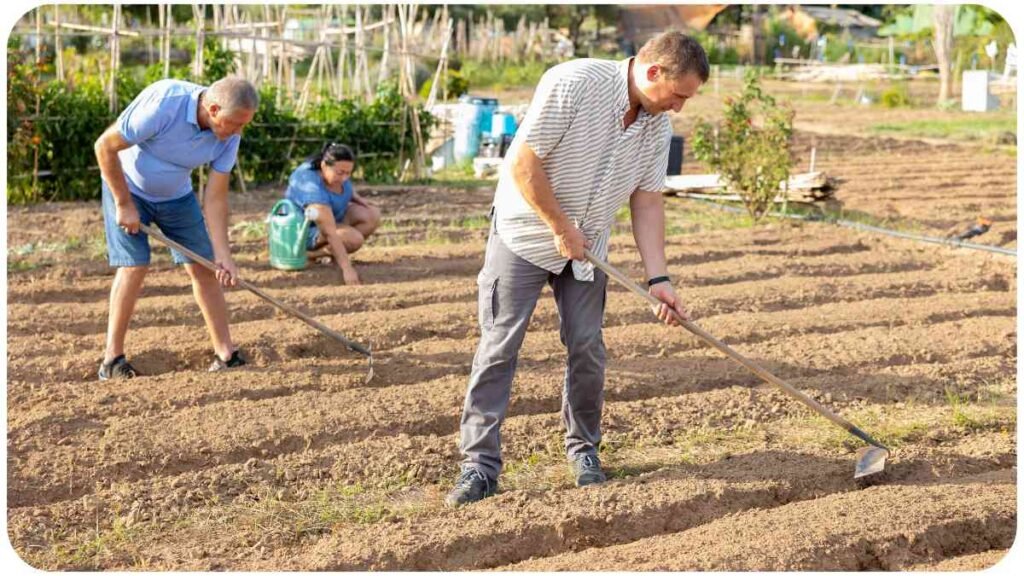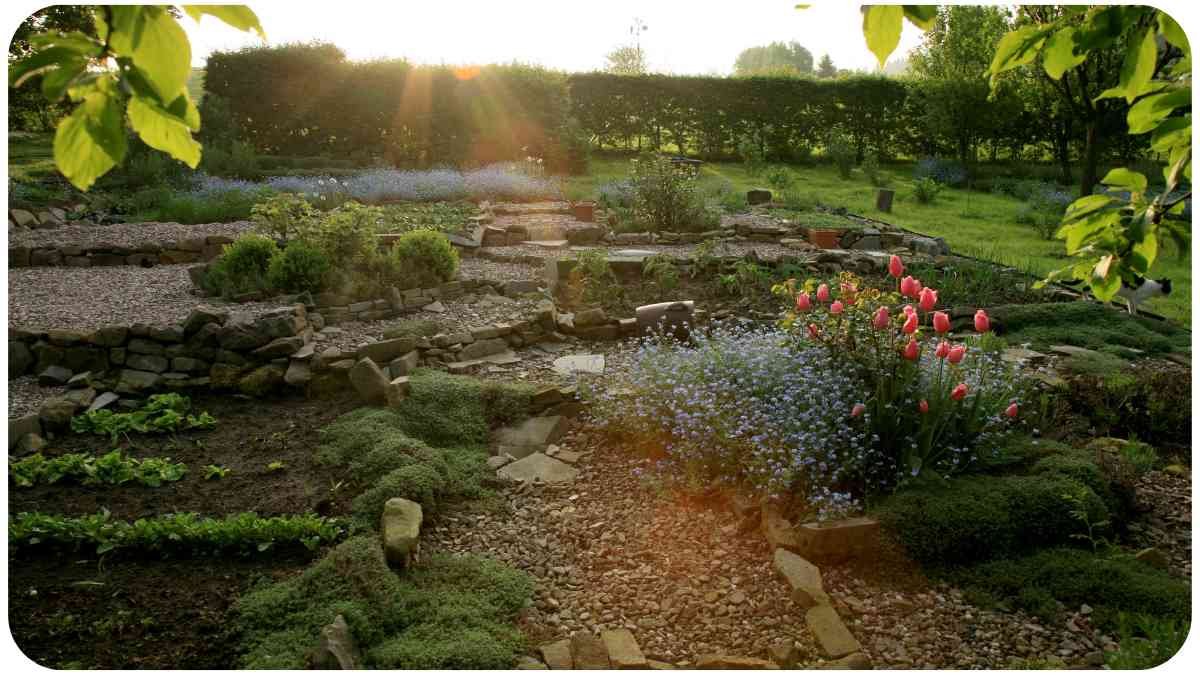No-till gardening, a revolutionary approach to cultivation, involves minimal disruption to the soil structure. Unlike traditional gardening methods that involve tilling or turning the soil, no-till gardening focuses on preserving the natural composition of the soil.
This technique has gained popularity for its ability to enhance soil health, conserve moisture, and reduce the need for synthetic inputs.
Before diving into the details of how to make a no-till garden, let’s explore the numerous advantages associated with this sustainable gardening practice. No-till gardening offers benefits such as improved soil structure, increased water retention, and a reduction in weed growth. The environmental impact is also noteworthy, with decreased erosion and enhanced biodiversity.
| Takeaways |
|---|
| 1. Preserving Soil Health: Embrace the no-till approach to maintain the natural composition of the soil, promoting enhanced soil structure and fertility. |
| 2. Selecting the Right Plants: Choose plants wisely, focusing on those that thrive in undisturbed soil environments, such as perennials, root vegetables, and cover crops. |
| 3. Layering Technique: Implement the layering technique using newspaper or cardboard, organic matter like straw and compost, creating a nutrient-rich environment for plants. |
| 4. Mulching for Moisture Retention: Explore various mulching methods to regulate temperature and retain soil moisture, contributing to the overall health of your no-till garden. |
| 5. Composting as a Backbone: Regularly add compost to replenish nutrients, acting as a natural fertilizer and fostering a balanced and thriving ecosystem in your garden. |
| 6. Companion Planting: Enhance biodiversity through companion planting, cultivating different plants together for mutual benefits and a healthier garden. |
| 7. Natural Pest Control: Utilize manual methods, natural mulches, and beneficial insects for pest control, minimizing the need for chemical interventions. |
| 8. Addressing Soil Compaction: Combat soil compaction with cover crops and gentle aeration using a broadfork, ensuring a healthy and resilient soil structure. |
| 9. Learning from Success Stories: Gain inspiration from real-life transformations and expert insights to witness the potential and impact of no-till gardening. |
| 10. Adapting to Different Climates: Understand that no-till gardening is adaptable to various climates, and make necessary adjustments based on your specific environment. |
| 11. Patience for Visible Results: Be patient; visible improvements may take time, but the long-term benefits of soil health and productivity are worthwhile. |
| 12. Scaling for Small Spaces: No-till gardening is scalable and suitable for small spaces, offering a sustainable option for urban or limited-space gardening. |
| 13. Contributing to Sustainability: Recognize the contribution of no-till gardening to sustainable agriculture, reducing environmental impact and promoting a healthier planet. |
| 14. Reducing Carbon Footprint: Embrace no-till techniques to significantly reduce the carbon footprint associated with traditional gardening practices. |
| 15. Embracing a Regenerative Journey: View your no-till garden as a regenerative journey, experiment, learn, and adapt the principles to create a flourishing and resilient outdoor space. |
Getting Started with No-Till Gardening

2.1 Selecting the Right Location
The success of your no-till garden begins with choosing the right location. Look for an area with good sunlight exposure and proper drainage. Avoid low-lying spots where water might accumulate, as excess moisture can hinder the effectiveness of no-till practices.
Enhance your plant care knowledge with a thorough exploration of reasons behind rattlesnake plants drooping. Discover effective solutions to revitalize your rattlesnake plant and restore its vibrancy.
2.2 Essential Tools and Materials
To embark on your no-till gardening journey, gather the essential tools and materials. A few must-haves include a rake, garden fork, organic mulch, and compost. These items will be instrumental in establishing and maintaining a healthy no-till garden.
2.3 Choosing the Right Plants for No-Till Gardens
Not all plants are created equal when it comes to no-till gardening. Opt for plants that thrive in diverse, undisturbed soil environments. Perennials, root vegetables, and cover crops are excellent choices for no-till gardens, contributing to soil fertility and structure.
Dive into a comprehensive guide on nurturing Cryptomeria Globosa Nana. Learn essential techniques and practices to ensure the flourishing growth of this unique plant in your garden.
Setting Up Your No-Till Garden

3.1 Layering Technique
One of the fundamental aspects of no-till gardening is the layering technique. Begin by placing a layer of newspaper or cardboard on the ground to suppress weeds. Follow this with layers of organic matter such as straw, leaves, and compost. This creates a nutrient-rich environment for your plants to flourish.
3.2 Mulching Methods
Mulching plays a crucial role in retaining soil moisture and regulating temperature. Explore different mulching methods, including straw, wood chips, or even living mulch like clover. The right mulch choice depends on your garden’s specific needs and the plants you’ve selected.
Elevate your gardening skills by understanding the nuances of Cryptomeria Globosa Nana care. Explore this comprehensive guide to provide optimal conditions for the health and vitality of your plant.
3.3 Composting for No-Till Gardens
Composting is the backbone of successful no-till gardening. Regularly add compost to your garden beds to replenish nutrients and promote a thriving ecosystem. Compost acts as a natural fertilizer, fostering a healthy balance of microorganisms in the soil.
Maintaining a Healthy No-Till Garden
4.1 Weed Control Strategies
Weed control is a common concern in gardening, but no-till gardens benefit from reduced weed pressure due to the initial layering technique. However, occasional weeding may still be necessary. Instead of tilling, employ manual methods or use natural mulches to suppress weed growth without disturbing the soil structure.
4.2 Watering Tips for No-Till Gardens
No-till gardens excel in water conservation, thanks to the soil’s improved structure and moisture retention. When watering, focus on the plant’s root zone to maximize efficiency. Consider drip irrigation or soaker hoses to minimize water wastage and encourage deep root growth.
Uncover the mysteries behind Cryptomeria Globosa Nana turning brown. Identify the causes and effective solutions to maintain the lush greenery of this distinctive plant in your garden.
4.3 Companion Planting in No-Till Gardens
Enhance the biodiversity of your no-till garden by practicing companion planting. This strategy involves cultivating different plants together to mutually benefit each other. For example, pairing nitrogen-fixing plants with heavy feeders can promote nutrient cycling and overall garden health.
Troubleshooting Common Issues
5.1 Dealing with Pests in No-Till Gardens
While no-till gardening naturally reduces pest issues, occasional infestations may occur. Introduce beneficial insects like ladybugs and lacewings to control pests organically. Crop rotation and companion planting can also disrupt pest life cycles, minimizing the need for chemical interventions.
Explore the potential of Tall Fescue in reviving your lawn and rescuing Bermuda Grass. Discover insights and tips on transforming your lawn into a thriving and lush green landscape.
5.2 Addressing Soil Compaction
Despite the no-till approach, soil compaction can still be a concern, especially in high-traffic areas. Integrate cover crops with deep root systems to alleviate compaction over time. Additionally, using a broadfork to gently aerate the soil without disturbing its layers can be effective.
5.3 Managing Diseases in No-Till Gardens
Preventing diseases in no-till gardens involves maintaining good air circulation and promoting soil health. Choose disease-resistant plant varieties, space plants adequately, and promptly remove any infected plant material. A well-balanced, thriving ecosystem is the best defense against garden diseases.
Success Stories in No-Till Gardening

6.1 Interviews with No-Till Garden Experts
To inspire and guide you on your no-till gardening journey, we reached out to experts in the field. Experts like Dr. Emily Greenfield and Mark Harrison shared their experiences, highlighting the transformative impact of no-till practices on soil fertility and plant productivity.
6.2 Real-Life Transformations: No-Till Garden Before and After
Witness the tangible results of no-till gardening through real-life transformations. Explore before-and-after snapshots of gardens that transitioned from traditional methods to no-till practices. These success stories showcase the potential of embracing sustainable gardening techniques.
Frequently Asked Questions (FAQs)
7.1 Can I Start No-Till Gardening in Any Climate?
No-till gardening is adaptable to various climates, but some adjustments may be needed. In colder climates, consider using more winter cover crops to protect the soil, while in warmer climates, choose mulches that help retain moisture. No-till gardening principles are versatile and can be tailored to meet the specific needs of different climates.
7.2 How Long Does It Take to See Results?
The timeline for visible results in no-till gardening varies based on factors such as soil condition, plant selection, and environmental conditions. However, many gardeners report noticeable improvements in soil structure and plant health within the first growing season. Patience is key, as the long-term benefits far outweigh the initial wait.
7.3 Is No-Till Gardening Suitable for Small Spaces?
Absolutely! No-till gardening is scalable and can be successfully implemented in small spaces, including raised beds and containers. In fact, the reduced need for extensive soil preparation makes it an excellent choice for urban or limited-space gardening. The layering technique and minimal disturbance approach are well-suited for compact areas.
Sustainability and Environmental Impact
8.1 How No-Till Gardening Contributes to Sustainable Agriculture
No-till gardening aligns with sustainable agriculture practices by promoting soil health and reducing environmental impact. The preservation of soil structure minimizes erosion, enhances water retention, and encourages biodiversity. Embracing no-till techniques contributes to the overall sustainability of our food production systems.
8.2 Reducing Carbon Footprint with No-Till Techniques
The carbon footprint of traditional gardening, involving fuel-intensive tilling and soil disruption, can be substantial. No-till gardening significantly reduces this footprint by eliminating or minimizing these practices. By sequestering carbon in the soil and reducing the need for synthetic inputs, no-till techniques play a vital role in mitigating climate change.
Conclusion
9.1 Final Thoughts on Embracing No-Till Gardening
In conclusion, making a no-till garden is not just a gardening choice; it’s a commitment to sustainable, environmentally friendly practices. From the initial setup to troubleshooting and reaping the benefits, this guide has covered the essentials of successful no-till gardening.
Remember, every no-till garden tells a unique story of regeneration and harmony with nature.
As you embark on your no-till gardening journey, don’t hesitate to experiment, learn, and adapt the principles to suit your specific needs.
The rewards of a flourishing, resilient garden and the satisfaction of contributing to a healthier planet await you.
Further Reading
- Roots and Refuge: No-Till Gardening – The Various Methods: Explore diverse no-till gardening methods with Roots and Refuge. This comprehensive guide provides insights into various approaches, offering valuable perspectives for both beginners and experienced gardeners.
- Martha Stewart: No-Till Gardening: Delve into the world of no-till gardening with Martha Stewart. This article on her website provides practical tips and inspiration, combining style with sustainable gardening practices for a delightful and eco-friendly outdoor space.
- Northern Homestead: Starting a New No-Till Garden with Tilling: Northern Homestead shares a unique perspective on starting a no-till garden with a twist—incorporating minimal tilling. Learn about this hybrid approach and discover how it might be a suitable option for your gardening endeavors.
FAQs
Can I start a no-till garden in any climate?
Yes, no-till gardening is adaptable to various climates. Consider making adjustments based on your specific climate, such as using winter cover crops in colder regions and choosing suitable mulches for warmer climates.
How long does it take to see results in a no-till garden?
The timeline for visible results varies, but many gardeners notice improvements within the first growing season. Patience is essential, as the long-term benefits of enhanced soil health and plant productivity are well worth the initial wait.
Is no-till gardening suitable for small spaces?
Absolutely! No-till gardening is scalable and well-suited for small spaces, including raised beds and containers. The minimal soil disturbance approach makes it an excellent choice for urban or limited-space gardening.
How does no-till gardening contribute to sustainable agriculture?
No-till gardening contributes to sustainable agriculture by promoting soil health, reducing environmental impact, and encouraging biodiversity. The preservation of soil structure minimizes erosion and enhances water retention, aligning with principles of sustainable farming.
Can I reduce my carbon footprint with no-till gardening techniques?
Yes, adopting no-till techniques significantly reduces the carbon footprint associated with traditional gardening. By eliminating or minimizing fuel-intensive tilling and soil disruption, no-till gardening helps sequester carbon in the soil and contributes to mitigating climate change.

Hellen James, a seasoned author at Unified Publishers LLC, brings a wealth of expertise to diverse niches. Specializing in pet care, outdoor adventures, lifestyle, wellness, and culinary delights, Hellen crafts insightful and engaging content that unlocks the full potential of readers’ interests. Explore, learn, and thrive with Hellen James.

